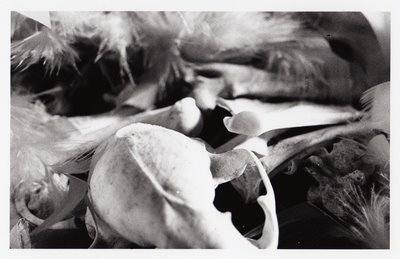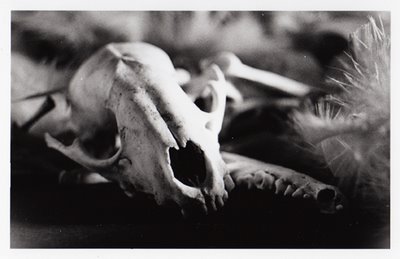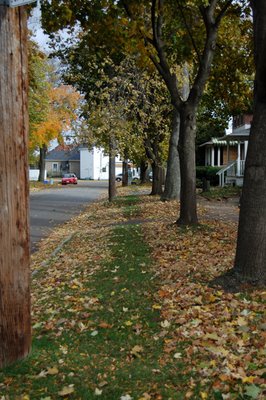Film Vs Digital




Movements and experiences within the city.








 Map taken from the Downtown Association website.
Map taken from the Downtown Association website.I’ve been thinking about downtown St. Catharines a lot recently. It’s where I work, shop, eat, drink, and live. But one thing that really bothers me is all the traffic that splits through the center of the city, connecting the downtown to several main city streets: Geneva, Niagara, Queenston or Church. The problem is that St. Paul, King St., and Ontario St. are all one-way streets, so people are forced to use the main street to get up-town? At one point, the city discussed whether or not it would be a good idea to make these streets two-way instead, but then there was the issue of a potentially very dangerous five-way intersection at the end of St. Paul St. to consider.
A possible solution is to close the front part of St. Paul St. entirely and make it a pedestrian walkway where, in the summer, people could lounge, go to city-organized events and concerts, and socialize. This would not be so bad for traffic, after making these couple alterations:
I can understand that one reason this might not look appealing to city developers is a lack of parking. During the week, the struggle for drivers to find a parking space is a daily occurrence in several downtown centers in Canadian cities, and usually the problem becomes significantly more difficult in bigger cities due to a shortage of usable space. Downtown St. Catharines has the space, but no one is using it yet. For example, behind St. Paul St. there is a space practically the size of a field that is only partially used for parking. To solve the parking issue, we must simply fill up the field and make the backside of St. Paul St. safer by maintaining it. If there were a major parking space available, it would surely be made of use on weekdays by citizens that work downtown, and on the weekends, by shoppers and late-night party-goers.
Pedestrian streets are not new; they are all over Europe and have proven success because they are much more enjoyable, away from the noisy traffic of the city. Because of the decreased traffic, the property value of store-top housing rises significantly. This enables building owners to maintain and fix-up the surrounding areas more.
Here are some other benefits and reasons why we should make St. Paul St. an exclusively pedestrian street:

Professors and Associate Professors share the responsibility of the “schools image” with the students because it is them whom, in doing research and writing text, create the scholarly atmosphere and academic integrity. Take the full-timers away and they will be replaced by teachers who will come to school for a few hours (however many classes they teach) and then leave to their other jobs or real life back home.
In an interview of Alfred Holden by Conan Tobias* (both Toronto city enthusiasts), they were talking about the TTC in Toronto and how to get people to use it and love it. Holden says that it needs to create a better, friendlier image for itself and essentially, sell it like a commodity. He says that people should have a warm, fuzzy feeling when thinking about the TTC, a feeling that it is an essential part of their lives. Reading this, I thought: Why do I not feel this way about Brock?
The Brock Press, this week, featured a comic making fun of the whole, “If you can walk and talk, you can go to Brock”, which has become a very widely known expression spread by Brock’s own students. Back in first year, when I was on the school running team, I would chat with the runners at other universities and when they would ask me: “So how do you like Brock?” I would reply: “Well, if you can walk and talk…” but they would finish the phrase for me because the person would already know of it. If you ask me, this is not really good; not really good that I was spreading the expression myself (but, hey, I was just a young kid who didn’t care), but even worse that people in other institutions knew of it as well.
I am not trying to bash Brock here. But maybe if the school approached the students with a new image, in the same way that Holden suggests for the TTC in Toronto, students and alumni would have more of a warm and fuzzy feeling about the school. One thing that won’t help with this is if we have a bunch more part-time teachers that are never around the school because – why would they? – when they are underpaid for the time that they are there.
If we look at schools like UofT, we may find a solution… That is the fact that $34.9 million last year, a large dent in operating cost money, is from alumni endowments. Why would UofT alumni donate all this money to the University? Well, first of all, there are bound to be a few CEO graduates from there, but also because UofT invests in the way that their students feel about the school while they are studying and keeps in touch with them when they leave.
Perhaps the solution to the problem of Brock’s academic integrity lies in advertising the school better to the students and graduates like the TTC might do to Torontonians. This involves a financial investment, initially, but the benefits will come with time.
*McBride, Jason and Wilcox, Alana. Utopia: Towards a New Toronto. Toronto: Coach House Books, 2005. Pg. 176 – 185.

 Six blocks of yellow line of paint along Scott St.
Six blocks of yellow line of paint along Scott St.


 I used this ready-made path as a point of departure to make something of my own. Similar to the incongruity of the yellow line, I made winding paths of freshly fallen leaves. I guess I hoped that someone would follow, and maybe if I made them slowly enough, perhaps then, we could share in the experience of walking the same path together. On the other hand, were there be no followers, the journey is solitary and the path temporary. I like that, too.
I used this ready-made path as a point of departure to make something of my own. Similar to the incongruity of the yellow line, I made winding paths of freshly fallen leaves. I guess I hoped that someone would follow, and maybe if I made them slowly enough, perhaps then, we could share in the experience of walking the same path together. On the other hand, were there be no followers, the journey is solitary and the path temporary. I like that, too.